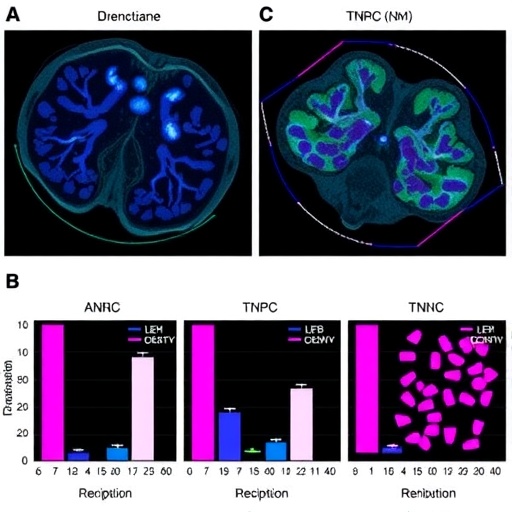The silver chub isn’t considered sensitive to climate change on a national scale, but context matters. For example, if climate change sensitivity is evaluated in only one region of the United States, the freshwater fish appears quite a bit more susceptible.

Credit: Photo by Felicia Spencer for Virginia Tech.
The silver chub isn’t considered sensitive to climate change on a national scale, but context matters. For example, if climate change sensitivity is evaluated in only one region of the United States, the freshwater fish appears quite a bit more susceptible.
“Relative to other species we looked at in the gulf region of the U.S., the silver chub occupied a pretty small geographic area,” said Samuel Silknetter, a Ph.D. student in biological sciences. “If we didn’t look at the climate sensitivity across multiple spatial scales, a regional analysis alone may miss the bigger context of why a species appears sensitive to climate change at some scales but not others, especially compared to other species.”
Silknetter and Associate Professor Meryl Mims recently led a team that explored the influence the spatial extent of research – the geographical coverage of data collected – has on evaluating the sensitivity of different fish species to climate change. The findings were published in Ecosphere.
“The spatial extent can be really relevant for specific cases, especially when you’ve got a species that is widespread but might be identified as more vulnerable in one region than another due to differences in distribution,” said Silknetter, who is also an affiliate of the Global Change Center’s interfaces of global change graduate program.
Using open-source data from the Global Biodiversity Information Facility and the U.S. Geological Survey, the team created a rarity and climate sensitivity (RCS) index for 137 freshwater fish species in the United States and then compared national scores with regional scores for each species. They found the relative sensitivity for species changed depending on spatial scale, and some species appeared more or less sensitive to climate change than the national index score indicated.
“Some species, like the elegant madtom, had high relative sensitivity across spatial extents yet had no state or federal conservation listings,” Silknetter said. “Our assessment identified some species with high relative sensitivity to climate change but no current protected status. These species can be targeted in future studies to determine whether they are truly at-risk species that have been previously overlooked.”
The research team sees relative climate change sensitivity rankings as another tool for conservation managers hoping to mitigate the effects of climate change.
“Some of the data we used dates back more than 100 years, providing information on historic as well as current distribution of freshwater fish species. But sometimes the data are few and far between, with only a few dozen documented occurrences for a species over that time period,” said Mims, an affiliate with the Global Change Center and the Fralin Life Sciences Institute. “The RCS index, which allows relative sensitivity rankings to be calculated from a range of data types, can enable direct comparisons of species that have wide-ranging data availability.”
In the hope of increasing the actionable nature of the findings, the research team has made the data accessible to anyone through the U.S. Geological Survey Science base.
“Ensuring that our methods follow best practices for open science is really important if we’re going to be transparent in what we’re doing,” Silknetter said. “We need to be proactive in trying to identify vulnerable species early because at some point there are fewer options for a species if the damage has been done.”
Going forward, the team hopes that its approach for assessing the vulnerability of multiple species can spur on additional conservation efforts.
“The increasing availability of public occurrence and trait data will improve our ability to identify species sensitive to climate change,” Silknetter said. “I think approaches like ours will play an important role in shaping how future assessments consider spatial extent.”
Journal
Ecosphere
DOI
10.1002/ecs2.4779
Article Title
Spatial extent drives patterns of relative climate change sensitivity for freshwater fishes of the United States
Article Publication Date
14-Mar-2024




